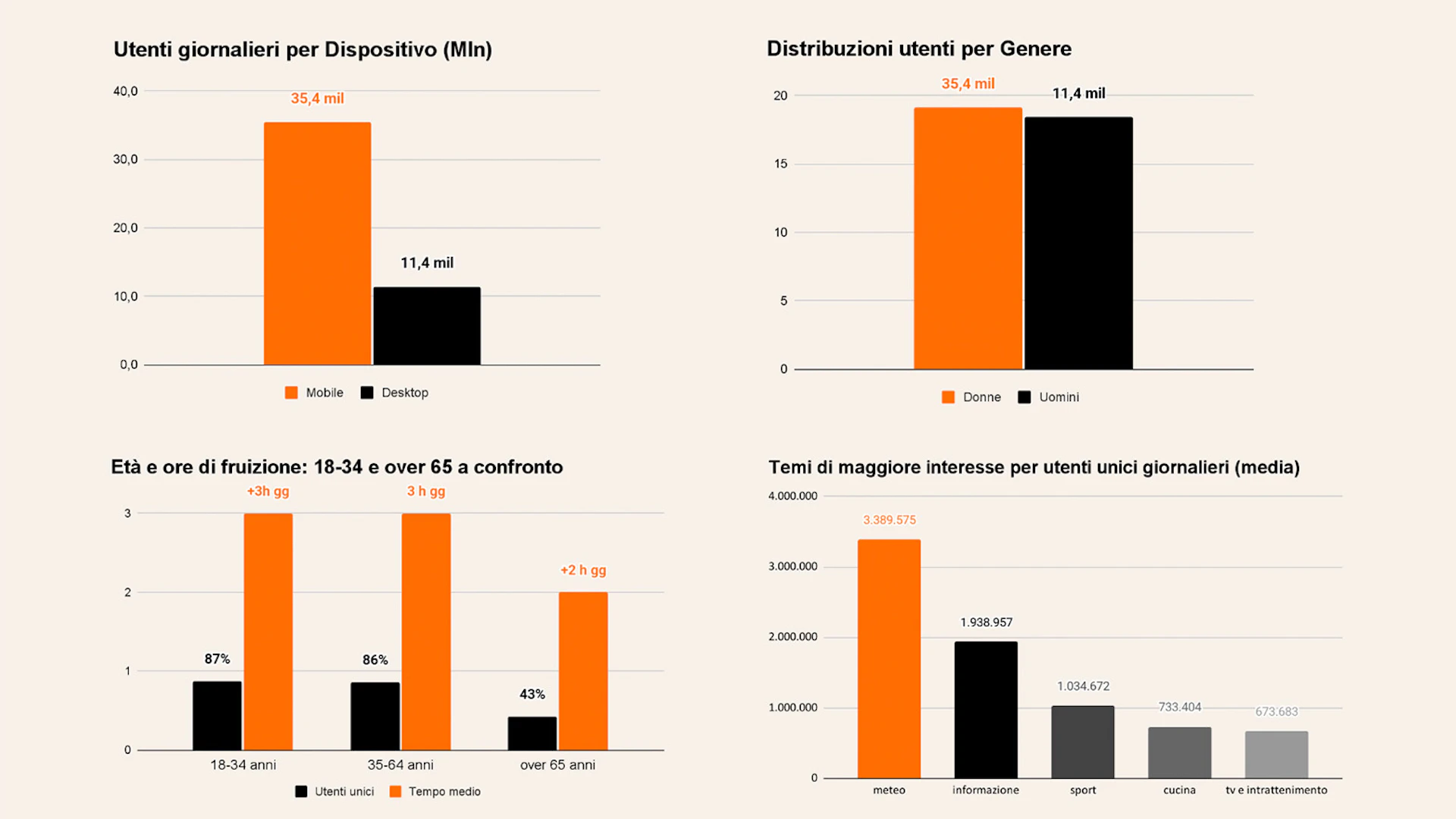Latest News
SUBSTACK È IL MOMENTO DI ESSERCI
Substack è la nuova casa per i brand che vogliono costruire connessioni autentiche.
La piattaforma, in forte crescita, sta conquistando anche la moda: Tory Burch ne è un esempio con la newsletter “What Should I Wear?”, che mixa contenuto editoriale, wishlist, backstage delle sfilate e interviste. L’approccio unisce cultura e marketing, spostando il focus da like e commenti a metriche più rilevanti come tassi di apertura, abbonamenti e link affiliati. Ovviamente, per funzionare, serve un tono di voce forte e coerenza narrativa: i brand devono comportarsi come creator, offrendo contenuti curati e relazioni vere.
E i risultati? Substack ha superato i 5 milioni di iscritti paganti, con una crescita paragonata al boom del podcasting. È il momento di esserci.

CHATGPT SHOPPING TIME
OpenAI ha annunciato un importante aggiornamento di ChatGPT che introduce una nuova funzione di acquisto integrato: ora gli utenti possono cercare, confrontare e acquistare prodotti (moda, bellezza, casa, elettronica) direttamente nella chat, usando un linguaggio naturale. Il sistema offre consigli personalizzati, prezzi aggiornati, recensioni verificate e link diretti, senza pubblicità.
Questa novità punta a semplificare il processo di scelta, evitando ricerche multiple o passaggi tra schede. Il tutto avviene in una conversazione fluida, con possibilità di fare confronti tra prodotti o richiedere valutazioni su misura.
TWITTER PERDE UTENTI IN UE
X sta perdendo terreno in Europa – e i numeri lo confermano.
Con grande ritardo, la piattaforma ha pubblicato i dati richiesti dal Digital Services Act: da agosto 2023 ha perso oltre 11 milioni di utenti europei, pari a un calo del 10,5%.
I paesi più colpiti? Francia (-2,7M), Polonia (-1,8M), Germania (-1,3M) e Spagna (-1M). In termini percentuali, il crollo è ancora più netto: -25% in Lituania e Lussemburgo, -20% in Polonia.
E mentre Elon Musk parla di 600 milioni di utenti attivi al mese a livello globale, in Europa la realtà è diversa: -15% da quando ha preso le redini di X.
Un calo che mette in discussione la reale crescita della piattaforma e il suo ruolo come spazio informativo credibile.

Social Insights
LINKEDIN BRAINROT
LinkedIn non è più il social network serio e professionale di un tempo. Oggi è diventato il teatro di una retorica aziendale iperbolica, dove storytelling forzati, autocelebrazione e dinamiche da influencer dominano i contenuti.
Un’analisi di Metricool ha rilevato un aumento di post autoreferenziali, mentre Wired segnala che oltre il 54% dei testi lunghi è generato da intelligenze artificiali, contribuendo a una comunicazione sempre più standardizzata.
Questi cambiamenti hanno trasformato LinkedIn da una piattaforma professionale sobria a un social network più orientato alla spettacolarizzazione del lavoro e alla costruzione di un'immagine personale, spesso a scapito dell'autenticità e della sostanza professionale.
LA TERZA RECESSIONE DEI MILLENIAL
I Millennials stanno affrontando la loro terza recessione economica: la prima nel 2008, la seconda con il Covid nel 2020, e ora una nuova crisi è alle porte. La risposta? Un'ironia collettiva che ha dato vita a una vera e propria cultura dei meme, usata per affrontare una realtà che sembra non cambiare mai.
Questi meme sulla crisi economica sono diventati uno strumento per elaborare la frustrazione, trasformandola in un'opportunità per ridere della situazione. L'umorismo diventa così un modo per mantenere un equilibrio emotivo di fronte all'incertezza.
Questa tendenza è il segno di una generazione che, pur nel mezzo delle difficoltà, ha trovato nei momenti di crisi un'opportunità di riflessione e condivisione. Piuttosto che nascondere la gravità della situazione, i Millennials l'affrontano con un sorriso, creando un linguaggio comune che trasforma il caos in qualcosa di collettivo e, soprattutto, di affrontabile.
VATICAN CORE
La morte di Papa Francesco ha dato una spinta finale a una tendenza che stava già prendendo piede sui social: il Vatican-core. Il fenomeno ha avuto il suo inizio con il film Conclave di Edward Berger, che ha portato sotto i riflettori le battaglie tra cardinali in un contesto vaticano.
In un mondo globalizzato e influenzato dallo streaming, molti hanno scoperto il fascino dei complotti ecclesiastici e dei "cardinali in gonne", stravolgendo l’immaginario tradizionale.
Il passo successivo è stato quello di reinterpretare il film con il linguaggio del mondo queer e dei fandom, trasformando i cardinali in icone pop.
E mentre l'eco della Brat Summer si faceva ancora sentire, è esplosa la produzione di fancam dei protagonisti del film, abbinate a tracce di Charli XCX, rendendo il Vatican-core un vero e proprio meme globale.
NOSTALGIA TREND 2025
Il passato ha preso il controllo di ogni settore creativo –cinema, moda, musica, persino beauty – diventando l’unica tendenza capace di catturare attenzione e vendere. Sui social, remake, sequel e revival si moltiplicano in un flusso continuo, alimentando un’estetica già vista che confonde nostalgia e innovazione. L’incertezza del presente e un futuro sempre più incerto spingono brand e creativi a rifugiarsi in cicli infiniti di riferimenti agli anni ’80, ’90 e 2000.
Le piattaforme amplificano questa ossessione per il passato, trasformando ogni micro trend in un remix istantaneo di immagini e simboli già noti. Non c’è tempo per creare qualcosa di nuovo: tutto è un déjà vu, un collage di citazioni.
Ma quanto può durare? Quando i social si stancheranno di riproporre lo stesso passato, cosa resterà da raccontare?
PLATFORM UPDATE:
- INSTAGRAM: TESTING PER LE STORIES IN COLLAB
- INSTAGRAM: ARRIVA IL FEED MODIFICABILE
Media
AUDICOM APPROCCIO DATA DRIVEN
Dai dati emerge una maggiore presenza online del pubblico femminile. Anche per quanto riguarda i dispositivi si evidenzia un divario: il mobile registra 35,4 milioni di utenti unici giornalieri, mentre il desktop resta prevalentemente legato all’ambito lavorativo.
La fascia d’età 18-34 anni si distingue come la più attiva online, sia per numero di utenti sia per tempo medio di navigazione.
Gli interessi principali online vedono al primo posto il meteo, seguito da informazione, sport, cucina e intrattenimento.

DEMAND GEN DOMANDA LATENTE, IMPATTO REALE
Le campagne Demand Gen, attraverso contenuti visivi come immagini e video, mirano a stimolare la domanda raggiungendo l’utente nei touchpoint Google più immersivi e rilevanti: YouTube, YouTube Shorts, Discover e Gmail. Approfondimento su: Google Ads Help
Grazie all’AI, gli inserzionisti sono in grado di creare campagne mirate utilizzando tecniche di targeting avanzato, al fine di raggiungere audience simili a quelle già coinvolte o clienti esistenti (pubblici "lookalike") e aumentare quindi le probabilità di intercettare nuovi potenziali clienti.
Anche Hogan ha utilizzato le campagne Demand Gen in vista della shopping season. Questa scelta ha portato un numero di sessioni sul sito web del brand 4 volte più alto, con un costo per azione più basso del 31%.
Cosa ci è piaciuto?
Pensare a una nuova vetrina shopping, più ingaggiante, capace di intercettare l’utente prima ancora che esprima un bisogno attraverso la ricerca.
AI AGENT, SUPPORTO PER IL MEDIA PLANNING
Gli agenti AI sono software intelligenti e autonomi, progettati per supportare task complessi in modo attivo e adattivo. A differenza delle classiche automazioni, non si limitano a eseguire comandi ma prendono decisioni, apprendono dai dati e si adattano agli scenari.
Chi sono
Esistono agenti diversi a seconda della funzione: strategist agent, buyer agent, analyst agent, assistant agent – ognuno con un compito specifico ma capaci di lavorare in sinergia tra loro. Per le agenzie media questo significa alleggerire la parte operativa e tattica, velocizzare le risposte e liberare tempo per la strategia. L’AI non sostituisce i planner, ma li potenzia: aiuta a fare di più, meglio, e in meno tempo.
Cosa possono fare:
Nel mondo media diventano alleati preziosi, possono:
- simulare scenari di investimento;
- monitorare le attività in tempo reale e su più piattaforme;
- riformulare piani sulla base di nuove istruzioni;
Come lo fanno:
In TIM, Mint.ai ha introdotto una squadra di agenti AI che affianca i planner nella pianificazione, attivazione e ottimizzazione delle campagne. Quando le performance su Meta sono calate, l’agente ha spostato il budget su YouTube, dove il costo per acquisizione era più basso, tutto in tempo reale e senza intervento umano. I planner mantengono la regia strategica, delegando all’AI le operation. Risultato: -30% di tempo operativo e strategie che si adattano da sole ogni giorno.
Credits
SUNTIMES
Editor: Sophia Schiaroli e Ingrid Zanninello
Latest News: Matteo Granata
Social Insight: Francesca Martinolich
Content Trend: Alessandro Aldè
Platform Update: Victoria Beni
Media: Eleonora Cisini e Gabriele Coviello
Fonte MEDIA
Mint e Watsonx

